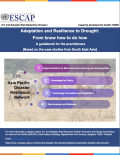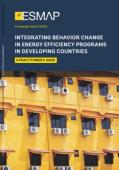
The guidance is structured around six technical modules and two strategic modules, which are focused on plastic and waste management.

This document is intended to support environmental improvement efforts of all actors in the tourism sector. It can be used by all organisations and stakeholders who seek for reliable and proven information to improve their environmental performance. In case they have an environmental management system, such as EMAS, they can also use the document to develop it further, especially with respect to continuous environmental improvement measures and targets.
These Guidelines help both researchers and practitioners to assess the positive and negative social and socio-economic impacts of products over their lifecycle.
This Guidance aims to provide a methodology for countries to identify plastic leakage ‘hotspots’, find their impacts along the entire plastic value chain, and then prioritise effective actions to stop the leakage at each hotspot.
The UNEP LIRA Guidance offers suggestions on ways to establish both chemicals control legislation and institutional capacity.
This paper focuses on key issues related to the potential structure of the CRTs and approaches to filling them in. The paper assesses different CRT reporting scenarios through worked examples.

This guidebook aims to promote drought adaptation as the key to drought management processes and provides strategic and practical options to operationalise drought adaptation in South-East Asia.
The key recommendations for action of the EU Platform on Food Losses and Food Waste address action required by public and private players at each stage of the food supply chain, including food redistribution. The recommendations also include a set of horizontal or ‘cross-cutting’ recommendations, which are common across various stages of the food value chain, often involve multiple actors and are needed to achieve the global food loss and waste targets (SDG Target 12.3).
The Circular Economy Global Sector Best Practices series aims to provide a starting point, background resource, and rich reference source for future efforts to engage Canadian firms and innovators in the journey towards a circular economy, and to build sector-based roadmaps to a circular economy in Canada.

The purpose of this guide is to raise awareness of behavioural approaches to achieving development outcomes, demonstrate the role that behavioural sciences can play in promoting energy efficiency, and provide guidance on how to integrate behaviour change approaches into projects.
